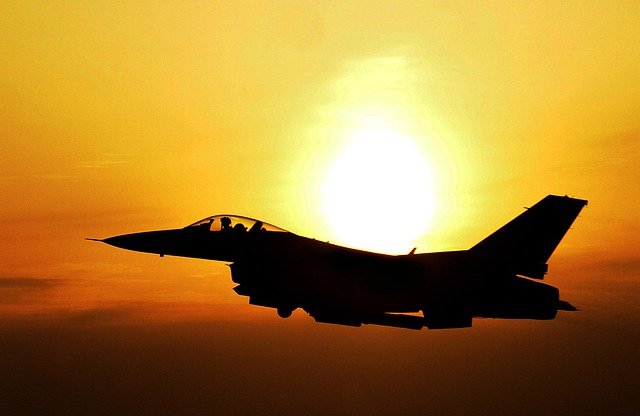Military Allowances Guide

What are military allowances? These are different types of payment than your base pay, proficiency pay, hazardous duty pay, or others. An allowance typically meets a specific need or anticipates a certain need.
They may be needed to offset the cost of relocating to a new assignment, to help make family separations more affordable, or to offset the cost of buying food in a location where military mess halls or other options just aren’t available.
Guide to Military Allowances
Military allowances such as BAS and the military housing allowance known as BAH are tax-exempt which makes them an important part of any military member’s budget. Many allowances are traditionally tax exempt. A new allowance created in the 21st century may be subject to federal taxes thanks to alterations in federal law for all allowances created after 1986; if a new allowance were created tomorrow it may be taxed unlike many of the others listed here.
To draw military allowances, you must either be authorized by your chain of command or you must apply (in certain cases) through your base finance office. Some allowances are “predetermined” meaning they have already been authorized for any new troops headed to the duty station. In other cases, individual determinations may be made based on a servicemember’s financial situation, the nature/location of the new duty assignment, and other factors.
There are multiple types of military allowances. They include, but may not be limited to:
- Cost of Living Allowance
- Basic Allowance For Housing (BAH)
- Basic Allowance For Subsistence (BAS)
- Basic Needs Allowance
- Clothing allowance
- Dislocation Allowance
- Family Separation Allowance
Cost of Living Allowance
The Cost Of Living Allowance, also known as COLA, is offered to those who serve overseas. This benefit varies depending on location, is tax-exempt, and is meant to offset the higher cost of living at an overseas location.
The philosophy behind COLA is that it is meant to help “equalize purchasing power” for those assigned to a more expensive duty station including those in Alaska and Hawaii. COLA is calculated by comparing the prices of goods and services at the duty location, “with average prices for equivalent goods and services” within the continental United States.
There is a taxable stateside COLA known as CONUS COLA (CONUS is an acronym for the Continental United States) designed “to help offset higher prices in the highest cost locations” in the United States exceeding the typical costs of other U.S. assignments by eight percent or higher. This allowance is taxable because it was created after 1985 (see above). You must be authorized for COLA or CONUS COLA but in most cases, your eligibility for it is already known once you have your PCS orders in hand.
In 2024, the Dod expanded the number of people eligible for stateside COLA as well as the number of qualifying locations. According to Military.com, “high-cost cities in New York, Virginia, Colorado, California and Oregon” have been added to the Defense Department’s cost-of-living allowance list.
Military Clothing Allowance
The Military Clothing Allowance is offered as an offset for required uniform purchases that can include the service member’s initial uniform purchases in basic training, replacements for those purchases, plus clothing maintenance or repair.
The initial clothing allowance is paid when you enter basic training when you first report for active duty, and after completing a prescribed number of training periods as a member of a Reserve Component. Payment levels vary depending on a number of variables.
Cash Clothing Replacement Allowance And Extra Clothing Allowance
These two allowances are paid depending on the circumstances. The Clothing Replacement allowance is offered each year on the servicemember’s “anniversary month”. This money is meant to be used to replace uniforms as they age out of serviceability through normal wear and tear.
The Extra Clothing Allowance is more situational, it is paid only in cases where additional uniforms or civilian clothing might be needed for military duty. Your command may make the determination that you are entitled to this allowance, and it is not paid automatically.
Basic Allowance for Housing (BAH) and the Overseas Housing Allowance (OHA)
There are two types of tax-exempt military housing allowances. One is paid to those serving in the United States, the other is paid to those serving at overseas locations.
The 2 types of military housing allowances are BAH and OHA.
- BAH is paid to those with military duty in the United States.
- OHA is paid to those who are assigned overseas and who do not live in government housing.
- BAH rates are determined on an annual basis. These rates are set based on current economic factors, housing market data, and other variables.
- Overseas Housing Allowances are paid to military members assigned overseas who won’t be living in on-base or government housing. You may or may not have all costs associated with living off-base overseas covered via OHA. It’s not safe to assume this allowance will fully cover your expenses.
RELATED: BAH Calculator
BAH and OHA Pay Rates Are Based on Duty Location
- Pay rates for both OHA and BAH vary based on duty location, your rank, and any cost of living adjustments made for the new year.
- You can get information about the OHA or BAH rates for a new duty assignment by contacting the military finance office at that post or installation.
- Be sure to ask about the rates, as they may be payable in the year you are PCSing in, and don’t forget to factor in the timing of any military promotion that may make you eligible for more BAH or OHA.
Basic Allowance for Subsistence
The Basic Allowance for Subsistence, informally known as a Subsistence Allowance or BAS is a tax-exempt military allowance that can help offset the cost of a service member’s meals.
BAS is offered when the federal government determines that an assignment or duty location warrants the allowance due to a variety of factors which can include the availability of kitchen facilities for service members to use, the cost of food or food-related expenses for the service member, and whether or not other food options are available.
BAS Is For The Servicemember
Family members (spouses included) do not qualify for BAS. The rate of payment is determined annually and is based on the USDA Food Cost Index. The rate of payment is based on whether the applicant is an officer or enlisted member.
All enlisted ranks earn the same BAS. The same is true for officers. No matter whether you are a “slick sleeve” Airman Basic or a Senior Master Sergeant, in 2022 the enlisted BAS rate was in the $400 range. Officers were paid just shy of $300 a month by comparison no matter if they are a Second Lieutenant or a full Colonel. These numbers are provided here as an example only; they are subject to change year to year based on a variety of factors.
How much can you expect from BAS? The rates in 2025 include:
-
- 2025 Enlisted BAS rate $465.77
- 2025 Officers BAS rate $320.78
BAS II
BAS II is essentially BAS at double the normal rate and may be paid to enlisted members at a permanent duty station who must live in single/unaccompanied government quarters or at an assignment that does not have “adequate food storage or preparation facilities” according to the DoD. That can include situations where a chow hall is not an option or the government cannot provide alternative meal options.
This type of BAS requires additional authorization before it can be approved for troops to use at a given assignment. This is typically decided as a group policy for a duty location rather than making individual policy decisions for specific soldiers, airmen, etc.
-
- 2025 Enlisted BAS II rate $931.54
Basic Needs Allowance
The Basic Needs Allowance is described by the DoD as intended for “active duty service members with dependents who have completed initial entry training and whose gross household income falls below 130% of federal poverty guidelines.”
The Basic Needs Allowance is paid monthly, like other military allowances, and is calculated based on household size. All dependents counted for this allowance must be registered in DEERS.
This military allowance is taxable and may affect eligibility for other government programs. This military benefit is not automatic and must be applied for. Prior to doing so, consider meeting with a personal finance expert to discuss which benefits might be available and which may be the most advantageous. Each branch of military service has its own application procedures–contact your unit orderly room or base finance office to learn more.
Dislocation Allowance
You may draw a Dislocation Allowance (DLA) when it is time to relocate because of a permanent change of station or PCS. This allowance is meant to “partially reimburse” troops who must:
- Make a permanent change of station move
- Make a change of housing ordered by the federal government
- Relocate due to an evacuation or similar event
DLA is meant to cover relocation costs not paid for through other allowances. It will typically NOT cover the full cost of a PCS move.
It’s good to know that members of the National Guard and Reserve do not qualify for DLA when coming onto active duty or departing active duty.
There is one exception–if you are placed on active duty for more than 20 weeks and are given PCS allowances AND you move your dependents from your home to a new permanent duty station you may qualify for DLA. Payment of DLA is not automatic and you must be approved to draw it.
Family Separation Allowance
Married service members who are given orders to an “unaccompanied” duty station where dependents cannot travel may qualify for a Family Separation Allowance.
The Family Separation Allowance is paid from the day of departure from the home station and ends the day prior to returning to the home station.
It should be noted that this allowance is only paid in cases where the servicemember has been ordered to take an unaccompanied assignment. Those who volunteer to do so are not authorized to get the Family Separation Allowance.
The allowance is not automatic and must be applied for via completion and submission of DD Form 1561, Statement to Substantiate Payment of Family Separation Allowance. Contact your unit orderly room or base finance office to get assistance filling out this form or learning more about the Family Separation Allowance benefit.
Family Supplemental Subsistence Allowance
In some cases, Family Separation Allowance funds aren’t quite enough. In those cases, this need-based allowance may be authorized based on household income level and household size. This allowance is only offered for those serving outside the United States or its territories. This benefit is not automatic and must be applied for using DD Form 2857. Contact your base finance office or unit orderly room if you need help determining if this program is right for you.
Frequently Asked Questions About Military Allowances
What are military allowances?
Military allowances are payments designed to meet specific needs of service members, separate from their base pay. They can help with costs such as relocation, family separation, or food. Many allowances are tax-exempt. But not all.
How do I receive military allowances?
Your chain of command must authorize allowances. Sometimes, you may need to apply through your base finance office. Some allowances are automatically authorized for certain duty stations, while others are determined individually.
Cost of Living Allowance (COLA)
What is the Cost of Living Allowance (COLA)?
COLA is a tax-exempt allowance for service members serving overseas (including Alaska and Hawaii) to offset the higher cost of living compared to the continental United States (CONUS). There is also a taxable CONUS COLA for those in high-cost locations within the continental U.S. It is NOT the same as the annual Cost of Living Adjustment (COLA) applied to some military benefits.
Military Clothing Allowance
What is the Military Clothing Allowance?
This allowance helps service members with the cost of purchasing and maintaining their required uniforms.
What are the different types of clothing allowances?
- Initial Clothing Allowance: Provided at the beginning of service for the first set of uniforms.
- Cash Clothing Replacement Allowance: An annual payment to replace worn-out uniforms.
- Extra Clothing Allowance: Paid in special cases where additional uniforms or civilian clothing are required for duty.
Basic Allowance for Housing (BAH) and Overseas Housing Allowance (OHA)
What are BAH and OHA?
These are tax-exempt allowances to help service members with housing costs.
- Basic Allowance for Housing (BAH): For service members in the United States.
- Overseas Housing Allowance (OHA): For service members stationed overseas who do not live in government housing.
How are BAH and OHA rates determined?
Rates for both allowances vary based on your duty location, rank, and annual cost-of-living adjustments.
Basic Allowance for Subsistence (BAS)
What is the Basic Allowance for Subsistence (BAS)?
BAS is a tax-exempt allowance to help service members with the cost of their meals when government-provided meals are not available.
Who is eligible for BAS?
BAS is for service members only; family members are not eligible. The rate is based on whether the service member is an officer or enlisted. A higher “BAS II” rate may be paid in situations with inadequate food storage or preparation facilities.
Basic Needs Allowance
What is the Basic Needs Allowance?
This is a taxable, monthly allowance for active-duty service members with dependents whose gross household income is below 130% of federal poverty guidelines. This allowance is not necessarily automatic.
Dislocation Allowance (DLA)
What is the Dislocation Allowance (DLA)?
DLA is an allowance to partially reimburse service members for the costs of relocating for a Permanent Change of Station (PCS). It is not intended to cover the full cost of a move. National Guard and Reserve members generally do not qualify, with some exceptions.
Family Separation Allowance
What is the Family Separation Allowance?
This allowance is for married service members on an “unaccompanied” tour where their dependents cannot join them. It is paid from the day of departure to the day before returning. This allowance is for those ordered to an unaccompanied assignment, not those who volunteer for it.
Family Supplemental Subsistence Allowance
What is the Family Supplemental Subsistence Allowance?
This is a need-based allowance for those serving outside the United States and its territories, based on household income and size. It is for situations where the Family Separation Allowance is not enough. An application may be required.
About the author
Editor-in-Chief Joe Wallace is a 13-year veteran of the United States Air Force and a former reporter/editor for Air Force Television News and the Pentagon Channel. His freelance work includes contract work for Motorola, VALoans.com, and Credit Karma. He is co-founder of Dim Art House in Springfield, Illinois, and spends his non-writing time as an abstract painter, independent publisher, and occasional filmmaker.


